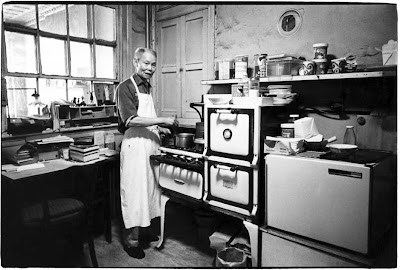If you've been on our "Hard Times" (formerly known as "Getting By") tour, you know a bit about the German-Jewish Gumpertz family, who resided at 97 Orchard in the 1870's and 80's, when the neighborhood was known as Kleindeutschland or "Little Germany". German immigrants formed this community based on their shared language, food and culture, but their religious practices were diverse: about 1/3 of the families were Catholic, 1/3 Protestant and 1/3 Jewish. Because this diversity was reflected in the population of 97 Orchard Street, Nathalie Gumpertz lived among many Lutheran neighbors who celebrated Christmas, including the Schneider family who ran the lager beer saloon downstairs.
 |
| A menorah (traditional candelabra used at Hanukkah) in the Gumpertz home at 97 Orchard Street |
As American Jewish communities grew throughout the 19th Century, the relatively minor holiday of Hanukkah gained significance in the United States. This can be attributed to Hanukkah's proximity to Christmas, as well as the close quarters shared by urban immigrant families of different faiths. As Andrew Heinze writes in Adapting to Abundance, "The drama of Christmas exerted a strong influence on Jewish newcomers, as the spectacle of the Christmas tree and the rite of gift giving altered the celebration of Chanukah" (1).
Jewish children were particularly enchanted with the very visible public display of Christmas gifts and decorations in media, shop windows and schools, prompting parents to enhance their holiday celebrations with Hanukkah gifts and even Christmas trees of their own. Heinze paints a vivid picture of Hanukkah celebrations in the Lower East Side, saying that "Passengers on the Second Avenue "El" train...in the darkness of a December evening were struck by the rows of burning candles that illuminated the windows of tenement house after tenement house." (1)
 |
| Children admire holiday toy displays c.1908; Image courtesy Library of Congress |
The earliest reference to Hanukkah in the online archive of the New York Times, dated December 29, 1889, focuses on Christian and Jewish communities celebrating winter holidays in tandem (or consecutively). The article, titled "A Jewish View of Christmas" is a re-printed message from the Jewish Messenger: "We Hebrews, disguise it as we may, cannot but feel the genial influence of the Christmastide. It meets us just as our joyous feast of Hanukkah has ended, which we celebrate with similar bounty. But we realize, none the less, the gentler aspects of the holiday, and strive to recognize as a daily lesson 'peace on earth, good will toward men'". (2)
 |
| Christmas Greetings c.1911 |
(1) Andrew R. Heinze, Adapting to Abundance: Jewish Immigrant, Mass Consumption and the Search for American Identity, Columbia University Press, 1990
(2) "A Jewish View of Christmas", The New York Times, December 29, 1889
















































